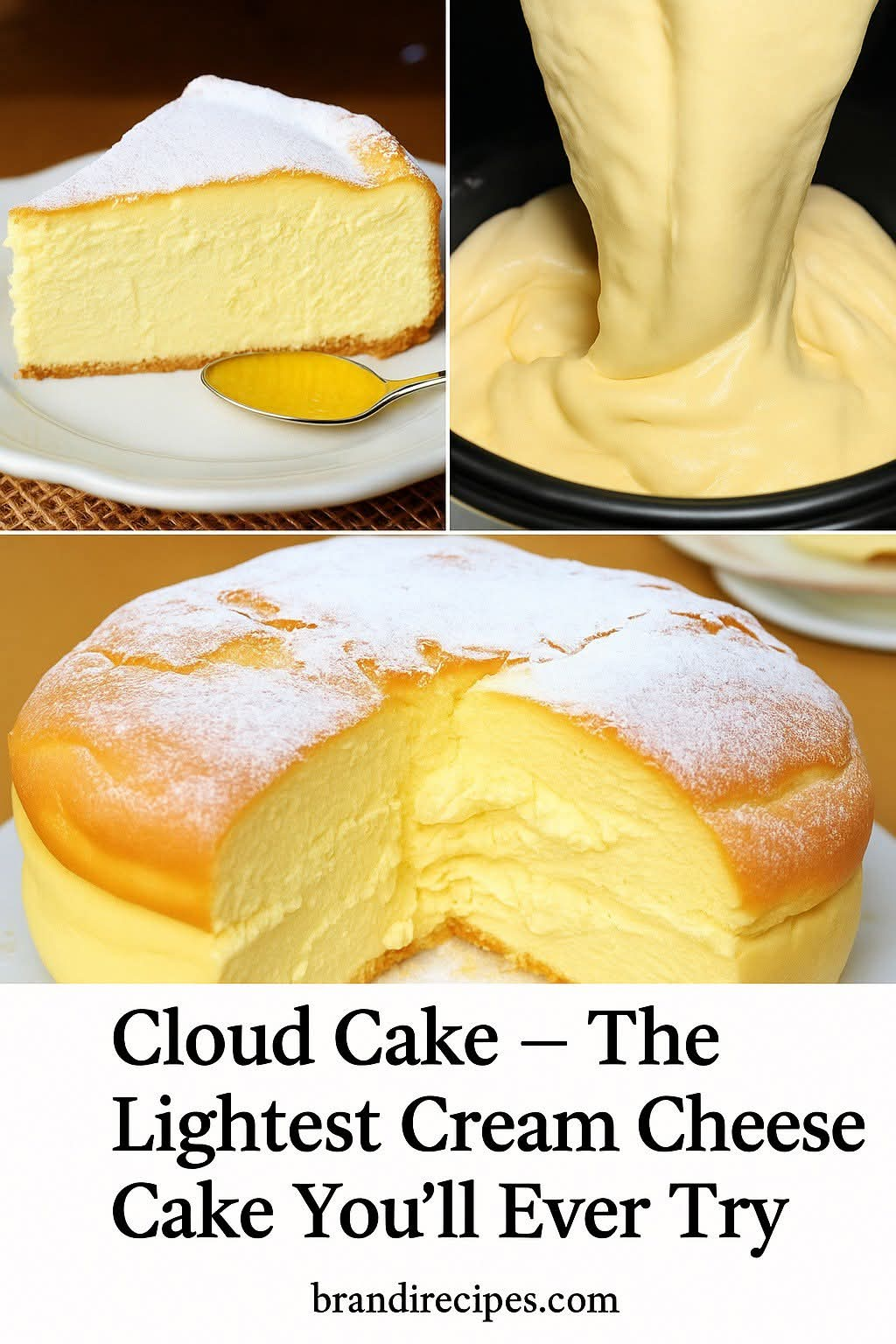Here’s a full, expanded Cloud Cake recipe write-up with everything you asked for—introduction, ingredients, instructions, methods, history, formation, conclusion, and even something for “lovers.”
🌥️ Cloud Cake Recipe – The Softest Cheesecake Ever
Introduction
Cloud Cake, sometimes called “Japanese Cotton Cheesecake” or “Soufflé Cheesecake,” is one of the fluffiest, airiest cakes you’ll ever taste. Unlike heavy American-style cheesecakes, this one is light as a feather, almost like biting into a sweet cloud. Its delicate balance of cream cheese richness and soufflé-like texture makes it a favorite for afternoon tea, special occasions, or even as a simple family treat.
The name “Cloud Cake” comes from the way it melts in your mouth—pillowy soft, tender, and smooth. If you’ve been searching for a cake that feels like eating a dream, this is it.
Ingredients
- 200g (7 oz) cream cheese, softened
- 50g (3 tbsp) unsalted butter, softened
- 100ml (7 tbsp) milk
- 4 large eggs, separated
- 70g (⅓ cup) granulated sugar
- 40g (⅓ cup) cake flour
- 10g (1 tbsp) cornstarch
- 1 tsp vanilla extract
Instructions & Methods
Step 1 – Preparing the Base
- Preheat your oven to 160°C (320°F). Line the bottom of a round 8-inch cake pan with parchment paper. Wrap the outside of the pan in foil to prepare for the water bath method.
Step 2 – Cream Cheese Mixture
- In a heatproof bowl over simmering water, melt together the cream cheese, butter, and milk until smooth. Remove from heat and let it cool slightly.
- Stir in the vanilla extract.
Step 3 – Dry Ingredients
- Sift in the cake flour and cornstarch. Whisk until fully combined and lump-free.
Step 4 – Egg Yolks
- Add the egg yolks to the cream cheese mixture and whisk until smooth and silky.
Step 5 – Egg Whites
- In a clean, dry bowl, beat the egg whites with an electric mixer until foamy. Gradually add the sugar and continue beating until soft peaks form.
Step 6 – Folding
- Gently fold the whipped egg whites into the cream cheese batter in three additions, being careful not to deflate the mixture.
Step 7 – Baking
- Pour the batter into the prepared pan. Place the pan into a larger baking dish and fill the outer dish with hot water (about halfway up the sides).
- Bake for 50–60 minutes, or until the top is golden and the cake is set but still slightly jiggly in the center.
Step 8 – Cooling
- Turn off the oven, crack the oven door, and let the cake cool slowly inside for 15 minutes to prevent cracking. Then remove and let it cool completely before slicing.
History
The Cloud Cake originates from Japan in the 1980s, when chefs began experimenting with Western-style cheesecakes but adapted them to suit the Japanese preference for lighter, less-sweet desserts. This unique hybrid combines the richness of cream cheese with the fluffiness of a chiffon or soufflé cake. Over time, it spread worldwide, becoming a viral sensation thanks to its jiggle and melt-in-the-mouth texture.
Formation (Texture & Structure)
The magic of Cloud Cake comes from:
- Whipped egg whites → giving it that airy, soufflé-like rise.
- Cream cheese base → ensuring richness without heaviness.
- Water bath baking → preventing cracks and keeping the texture moist and delicate.
This careful balance of science and art creates the signature “cloud-like” bite.
Conclusion
Cloud Cake is the ultimate treat for anyone who loves light yet indulgent desserts. It looks simple, but every bite reveals the artistry behind it. Whether you serve it plain, dusted with powdered sugar, or topped with fresh berries, it’s a dessert that always impresses.
Lovers 💕
For food lovers, this cake is a gentle reminder that not all indulgence has to be heavy. It’s a dessert for those who appreciate elegance in simplicity. Couples often enjoy baking it together—the slow folding of egg whites, the anticipation as it bakes, the joy of slicing into a soft, jiggly cake. It’s not just a recipe; it’s an experience that brings people closer.
✨ Would you like me to also give you a flavored twist version (like lemon cloud cake or chocolate swirl cloud cake), or do you want to keep it in the classic form?
